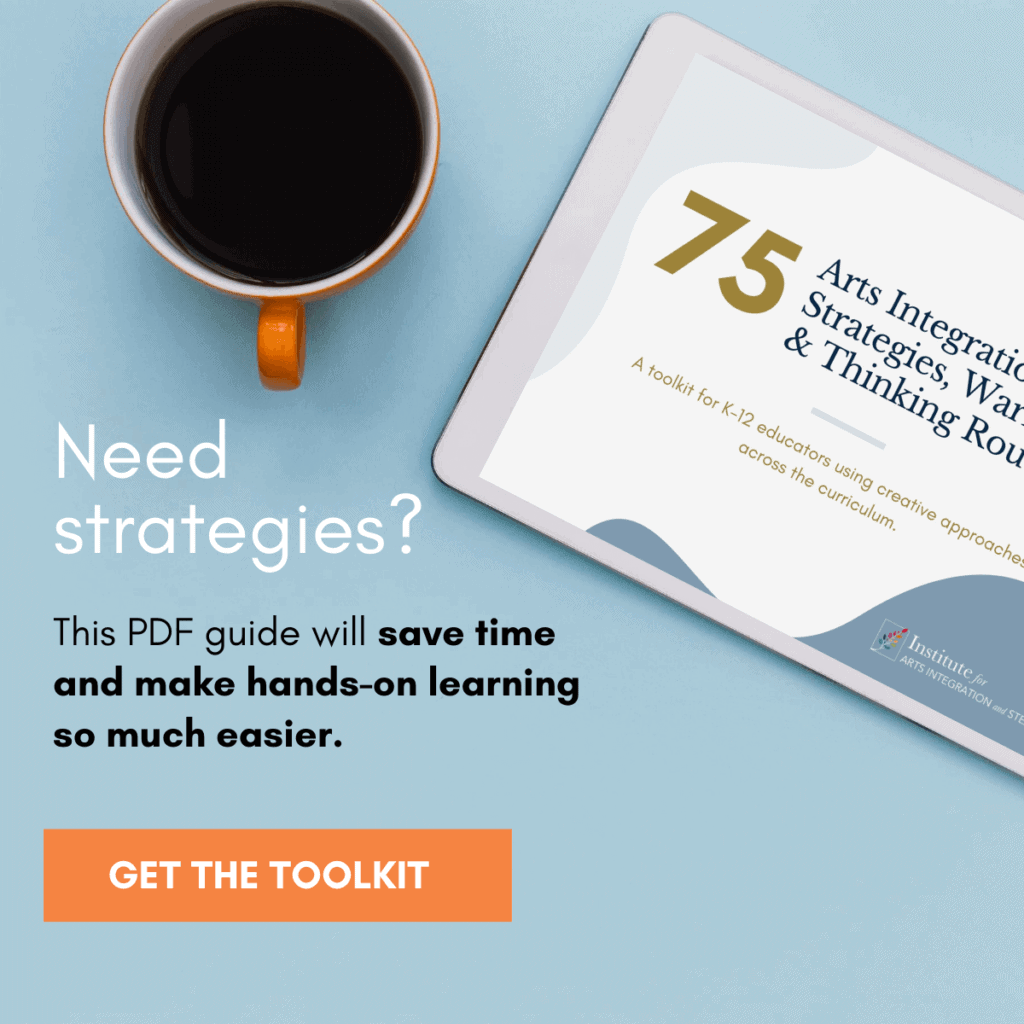Is it Arts Integration or STEAM?
2 Min Read • Arts Integration & STEAM
One of the questions we are most frequently asked is if a lesson is using an arts integration or STEAM approach. It can certainly be a challenge to figure out the difference, especially when the terms are used almost interchangeably.
Yet there are some distinctions between arts integration and STEAM, and knowing them will help you take a huge step forward in creating and implementing the best approach in your classroom. Today, I’m sharing a free download of the similarities and differences to help you get crystal clear on when to use each in your lessons. And if you’re looking for ideas on how to make this work, check out our Arts Integration and STEAM online conference. It’s a completely online event and you’ll receive 10 PD hours for participating!
Your Guide to Arts Integration and STEAM Approach
Arts enhancement, arts integration, and STEAM…where to begin? Each of these approaches is valid for different purposes in your classroom. It’s just a matter of determining which one is right for your lesson intention. Here’s a one-page downloadable guide for you to print and use as a handy reference as you go into your planning.

Arts Enhancement
Arts enhancement uses the arts in service of another content to increase student engagement. Here’s how you know something is arts enhanced:
Standards and Assessments: The lesson is non-standards based from either the content or the arts. Arts are not assessed.
Purpose for Using the Approach: Arts are used as a way to foster engagement or to make learning “stick”.
Foundational Support: Grounded in using the arts in service of another content area.
Intention and Focus: There is a broad focus. Meant to engage students in learning.
How it Addresses Content Areas: Can include any arts and content area.
Arts Integration
Arts Integration is an approach to teaching and learning through which content is taught and assessed equitably in and through the arts.
Standards and Assessments: The lesson has a direct connection to content and arts standards. Both are assessed.
Purpose for Using the Approach: Integrating the arts and any content area through naturally aligned standards.
Foundational Support: Grounded in aligned standards and assessment with a central topic.
Intention and Focus: Connective focus. Deepens learning, application & creativity.
How it Addresses Content Areas: Direct inclusion of all content areas, including E/LA and Social Studies.
STEAM Education
STEAM uses science, technology, engineering, the arts and math as access points for guiding student inquiry, dialogue and critical thinking.
Standards and Assessments: The lesson has a direct connection to content and arts standards. Both are assessed.
Purpose for Using the Approach: Integrates any STEAM area with another content through naturally-aligned standards.
Foundational Support: Grounded in inquiry, problem-solving and process-based learning.
Intention and Focus: Discovery focus. Process-driven through inquiry, design & creativity.
How it Addresses Content Areas: Addresses STEAM areas explicitly. Can utilize the literacy process & address social sciences .



